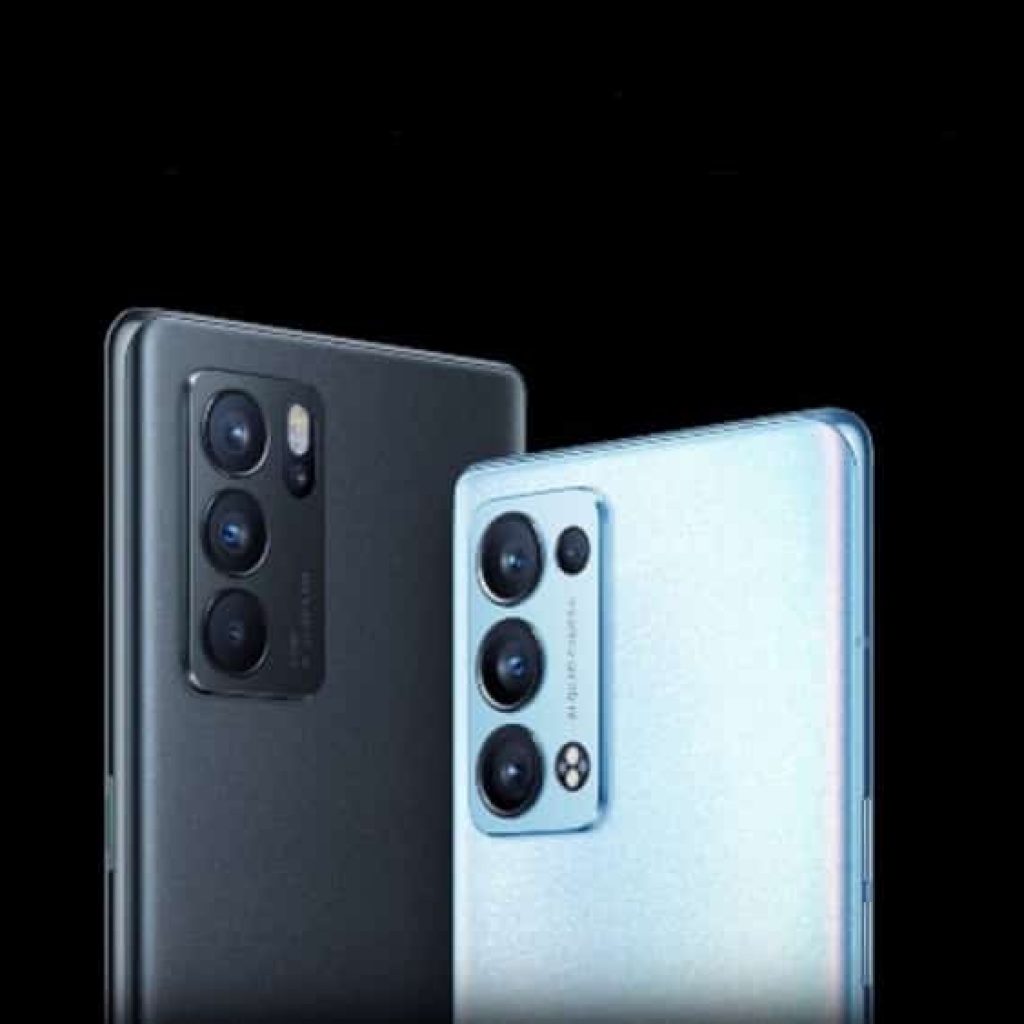Oppo has launched three new devices to its Reno lineup namely, the Reno 6, 6 Pro, and 6 Pro+. While the Reno 6 is the toned-down budget-friendly variant, the Pro and Pro+ are nearly identical. The main difference between the two lies in the camera and the chipset.
Design and Display
All the handsets in the Oppo Reno 6 series have an identical camera bump that is somewhat reminiscent of the Samsung Galaxy Note 20 series. The toned-down Reno 6 has flat frames for a boxier look pretty much like the iPhone 12. The Pro models sport a more rounded chassis.
The Oppo Reno 6 is built around a 6.4-inch flat AMOLED panel with 1080p resolution, 90 Hz refresh rate, and Corning Gorilla Glass 5 protection.
The Reno 6 Pro and Pro+, on the other hand, come with a curved 6.55-inch AMOLED display featuring 1080p resolution, 90 Hz refresh rate, and Corning Gorilla Glass 5 protection.
Internals and Storage
The Oppo Reno 6 is powered by the MediaTek Dimensity 900 SoC coupled with up to 12 GB RAM and 256 GB onboard storage. The storage can be expanded using a microSD card slot.
The Pro variant comes with the MediaTek Dimensity 1200 SoC at the helm while the Pro+ gets the Qualcomm Snapdragon 870 chipset. Both phones offer 12 GB RAM and 256 GB expandable onboard storage.
The software front is handled by Android 11 with ColorOS 11 custom skin on top.
ALSO READ
Apple Strengthens Lead as Global Smartwatch Shipments Surge by 35%
Cameras
Moving on to the optics, the Reno 6 has a triple sensor camera at the back with a 64 MP main sensor, an 8 MP ultra-wide-angle lens, and a 2 MP macro lens. For selfies, it is equipped with a 32 MP snapper.
The Reno 6 Pro sports a quad-sensor camera with specifications similar to the Reno 6. The only difference is an added 2 MP depth sensor. The selfie camera is also similar to Reno 6.
The Pro+ variant has a beefier camera on board. It sports a quad-sensor setup led by Sony’s 50 MP IMX 766. Accompanying the primary sensor is a 16 MP ultrawide snapper, a 13 MP telephoto lens with 2x optical zoom, and a 2 MP depth sensor.
Battery and Pricing
The Reno 6 packs a 4300 mAh cell with speedy 65W charging while the Pro and Pro+ come with a 4500 mAh battery, backed by 65W SuperVOOC 2.0 charging.
The Reno 6 will be available for sale on 11th June while the other two phones will be up on Oppo’s website by 5th June. The Pricing details are as follows.
| Oppo Reno 6 | |
| 8 GB/ 128 GB | $440 |
| 12 GB/ 256 GB | $500 |
| Oppo Reno 6 Pro | |
| 8 GB/ 128 GB | $549 |
| 12 GB/ 256 GB | $595 |
| Oppo Reno 6 Pro+ | |
| 8 GB/ 128 GB | $627 |
| 12 GB/ 256 GB | $705 |
Specifications
| Specifications | Oppo Reno 6 | Oppo Reno 6 Pro | Oppo Reno 6 Pro+ |
| CPU | Octa-core (2×2.4 GHz Arm Cortex-A78& 6×2 GHz Arm Cortex-A55) | Octa-core (1×3.0 GHz Cortex-A78 & 3×2.6 GHz Cortex-A78 & 4×2.0 GHz Cortex-A55) | Octa-core (1×3.2 GHz Kryo 585 & 3×2.42 GHz Kryo 585 & 4×1.80 GHz Kryo 585) |
| GPU | Arm Mali-G68 MC4 | Mali-G77 MC9 | Adreno 650 |
| Chipset | MediaTek Dimensity 900 | MediaTek MT6893 Dimensity 1200 5G (6 nm) | Qualcomm SM8250-AC Snapdragon 870 5G (7 nm) |
| OS | Android 11, ColorOS 11 | Android 11, ColorOS 11 | Android 11, ColorOS 11 |
| Networks | 2G, 3G, 4G LTE, 5G | 2G, 3G, 4G LTE, 5G | 2G, 3G, 4G LTE, 5G |
| Display | OLED Super AMOLED, 16M colors, 6.4 inches, 1080 x 2400 pixels resolution, 90 Hz | OLED Super AMOLED, 16M colors, 6.55 inches, 1080 x 2400 pixels resolution, 90Hz | OLED Super AMOLED, 16M colors, 6.55 inches, 1080 x 2400 pixels resolution, 90Hz |
| Memory | (8GB,12GB)/(128GB,256GB) | (8GB,12GB)/(128GB,256GB) | (8GB,12GB)/(128GB,256GB) |
| Camera | Primary: 64 MP + 8 MP + 2 MP | Primary: 64 MP + 8 MP + 2 MP + 2 MP | Primary: 50 MP + 13 MP + 16 MP + 2 MP |
| Selfie: 32 MP | Selfie: 32 MP | Selfie: 32 MP | |
| Connectivity | LTE, USB type-C, GPS, Wi-Fi, Bluetooth 5.2, | LTE, USB type-C, GPS, Wi-Fi, Bluetooth 5.2, | LTE, USB type-C, GPS, Wi-Fi, Bluetooth 5.2, |
| Fingerprint scanner | Under display | Under display | Under display |
| Battery | 4300 mAh | 4500 mAh | 4500 mAh |
ALSO READ
Amazon Agrees to Buy MGM for $8.45 Billion
The post Oppo Reno 6 Series Launched With AMOLED Displays and Upgraded Cameras appeared first on .


